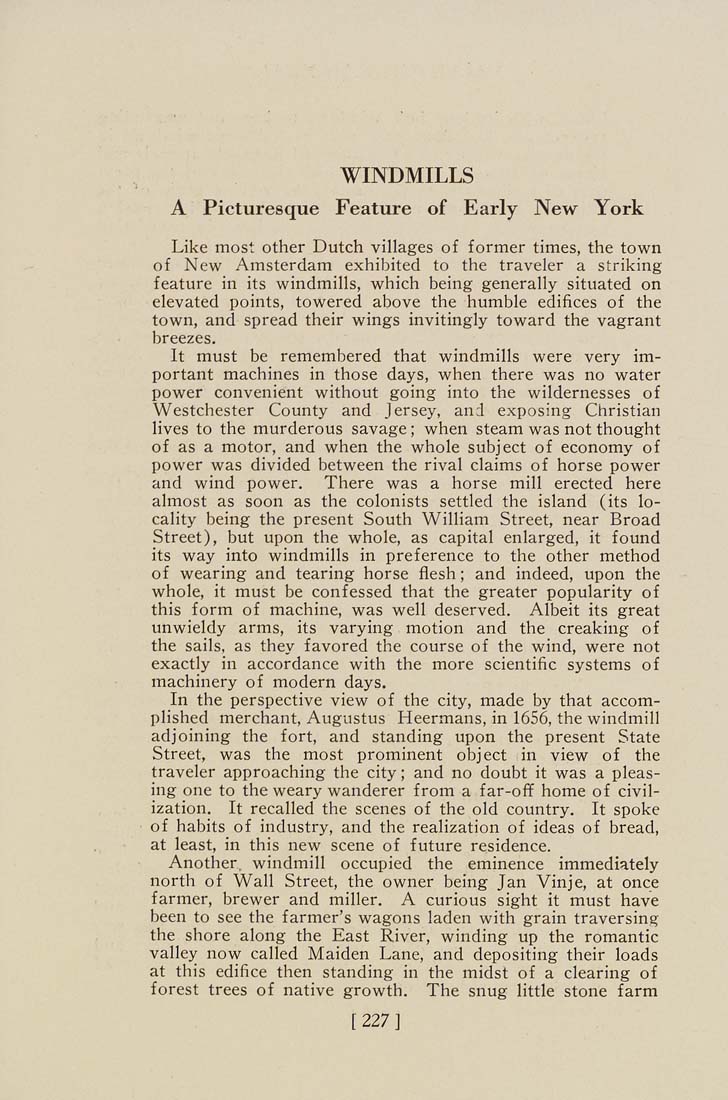WINDMILLS
A Picturesque Feature of Early New York
Like raost other Dutch villages of former tiraes, the town
of New Arasterdara exhibited to the traveler a striking
feature in its windmills, which being generally situated on
elevated points, towered above the hurable edifices of the
town, and spread their wings invitingly toward the vagrant
breezes.
It must be remembered that windmills were very im-
portant raachines in those days, when there was no water
power convenient without going into the wildernesses of
Westchester County and Jersey, and exposing Christian
lives to the murderous savage; when steara was not thought
of as a raotor, and when the whole subject of econoray of
power was divided between the rival claims of horse power
and wind power. There was a horse miU erected here
alraost as soon as the colonists settled the island (its lo-
cality being the present South William Street, near Broad
Street), but upon the whole, as capital enlarged, it found
its way into windmills in preference to the other method
of wearing and tearing horse flesh; and indeed, upon the
whole, it must be confessed that the greater popularity of
this form of machine, was well deserved. Albeit its great
unwieldy arras, its varying raotion and the creaking of
the sails, as they favored the course of the wind, were not
exactly in accordance with the more scientific systeras of
machinery of modern days.
In the perspective view of the city, made by that accom-
plished merchant, Augustus Heerraans, in 1656, the windmill
adjoining the fort, and standing upon the present State
Street, was the most prominent object in view of the
traveler approaching the city; and no doubt it was a pleas-
ing one to the weary wanderer frora a far-off horae of civil-
ization. It recalled the scenes of the old country. It spoke
of habits of industry, and the realization of ideas of bread,
at least, in this new scene of future residence.
Another, windmill occupicd the erainence iraraediately
north of Wall Street, the owner being Jan Vinje, at once
farmer, brewer and railler. A curious sight it raust have
been to see the farraer's wagons laden with grain traversing
the shore along the East ]R.iver, winding up the romantic
valley now called Maiden Lane, and depositing their loads
at this edifice then standing in the raidst of a clearing of
forest trees of native growth. The snug little stone farm
[227]
|








